Common Heath: Epacris impressa
A wiry open shrub with prickly tapering leaves to 15 mm long, it has masses of white, pink and red tubular flowers, with an indentation at the base of the petals, hence its name.
It has a long flowering period from March to November with the flowers often along one side of the stem. It can tolerate limited periods of wet and dry spells once established. Though not the easiest plant to propagate, it is an attractive rockery plant, particularly if the three colours can be grouped together.
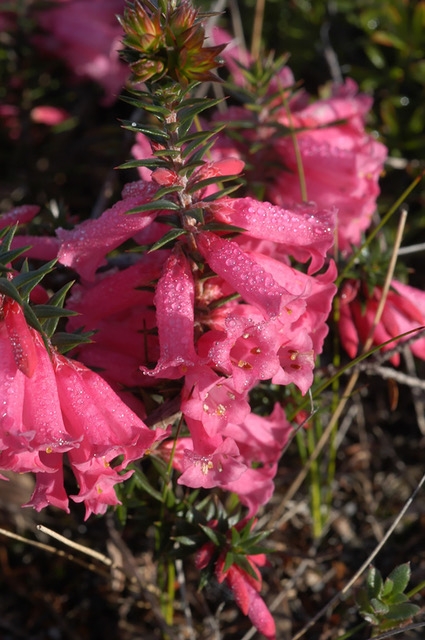 Common Heath
Common Heath
Cushion Bush: Leucophyta brownii
When growing along cliff edges at the coast it is a tight rounded cushion plant, but in a milder habitat it is a spreading shrub. It has silver grey foliage covered in short, white woolly hairs; the leaves are sessile and alternate along the wiry interlaced branchlets. The globular flower heads are pale yellow and each tiny flower head is made up of between one and three tubular florets. It can tolerate an alkaline soil, withstand wind and salt spray and responds well to pruning. The grey foliage reflects available light at night-time, making this an ideal plant for defining pathways in dimly lit areas. It can be propagated by seed or from cuttings.
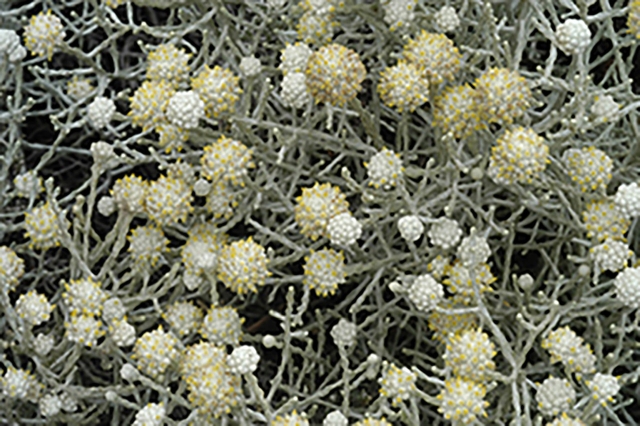 Cushion Bush
Cushion Bush
Anglesea Grey-gum: Eucalyptus litoralis
This eucalypt prefers the poor soils of sandstone and coastal ridges exposed to onshore ocean winds. It is a small tree to 18m in height and may be multi-trunked with thin fibrous grey-brown bark which is attached to the lower part of the trunk, whilst the upper trunk and branches are smooth and light grey-white in colour.
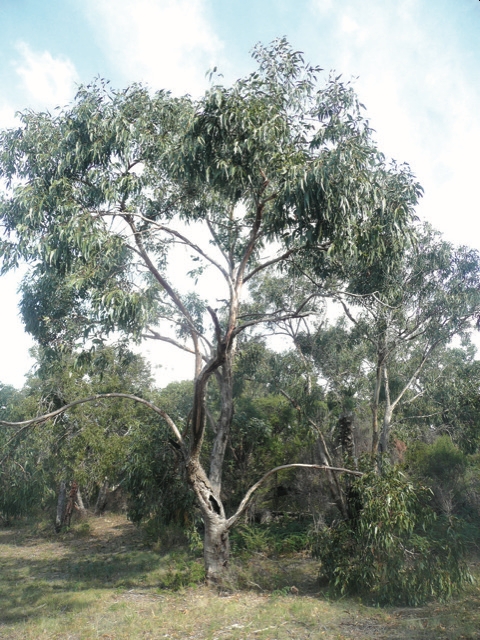 Anglesea Grey-gum
Anglesea Grey-gum
The leaves are long and lance-shaped to 18-35 cm. The flowers are a creamy-white, usually in groups of seven, attached to a broadly flattened ribbed stem (peduncle) of 2.5 cm long. The fruits are smooth, barrel shaped and may be moderately ribbed, with the valves below the rim of the fruit, through which the seeds are scattered. This tree is endemic to Anglesea. If you have the room in your garden, do plant this eucalypt.
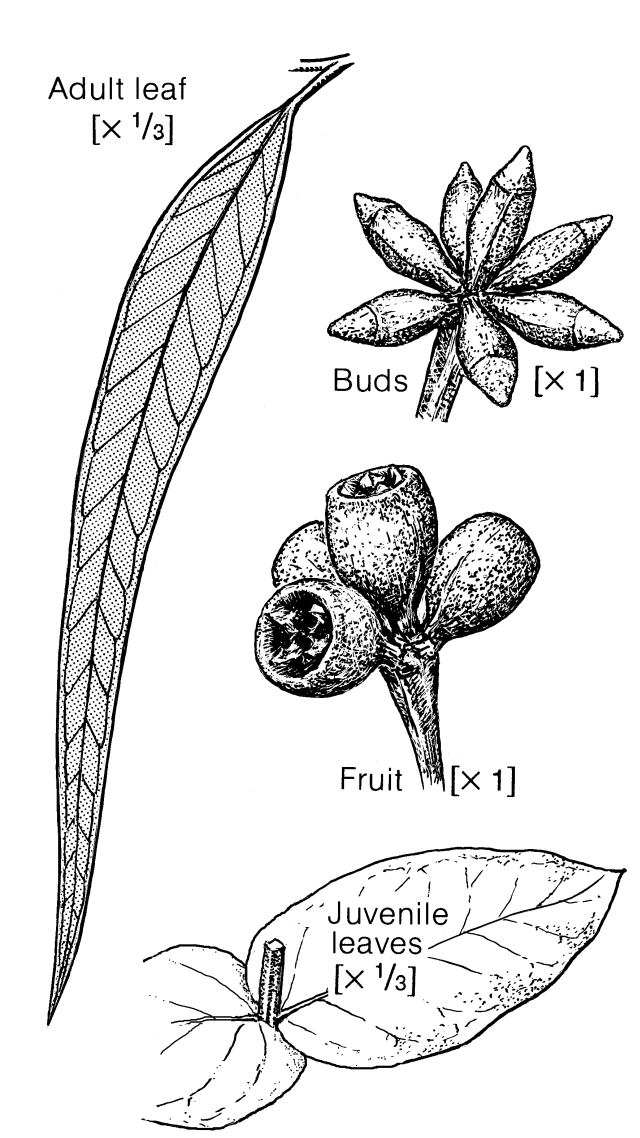
Leon Costerman’s illustration of Anglesea Grey-gum
Silver Banksia: Banksia marginata
Named after Sir Joseph Banks who collected the first specimens of the genus, it is the only species that occurs naturally in the district. It varies in size depending on where it grows. If exposed to salt-laden winds along coastal areas it only grows to a shrub but farther inland, or in a home garden in a protected area, it grows into a small tree.
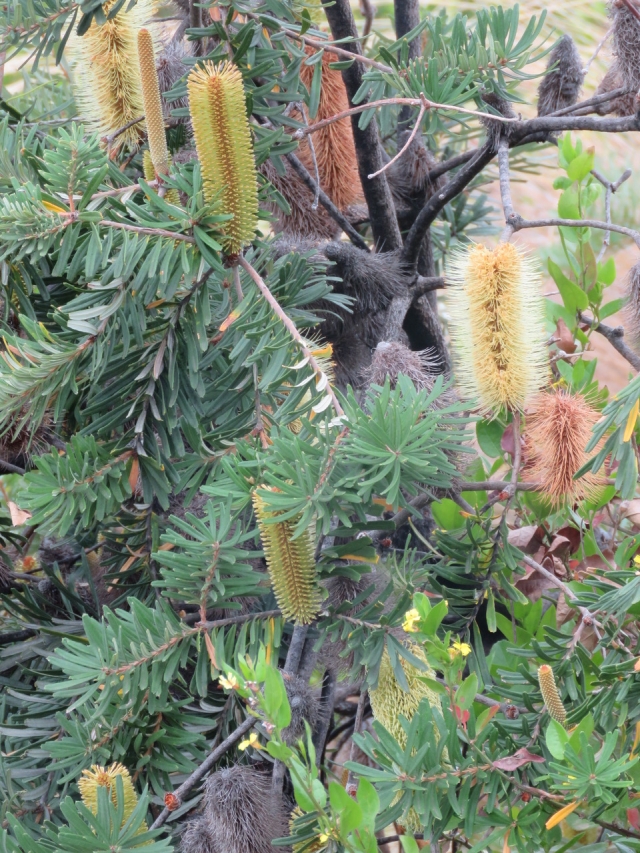 Silver Banksia
Silver Banksia
The leathery leaves are a dark, dull green on the upper surface, but the under surface of the leaf is silvery-white due to densely short white hairs. The leaves may be toothed or smooth and the tips are truncate. The flowers range from pale yellow-green to bright yellow from September to May. In time, the flowers turn to a brown-grey cone with seeds in pairs in horizontal follicles that open when mature. The seeds are winged to assist dispersal. The cones can remain on the plant for several years.
Phillippa Hesterman